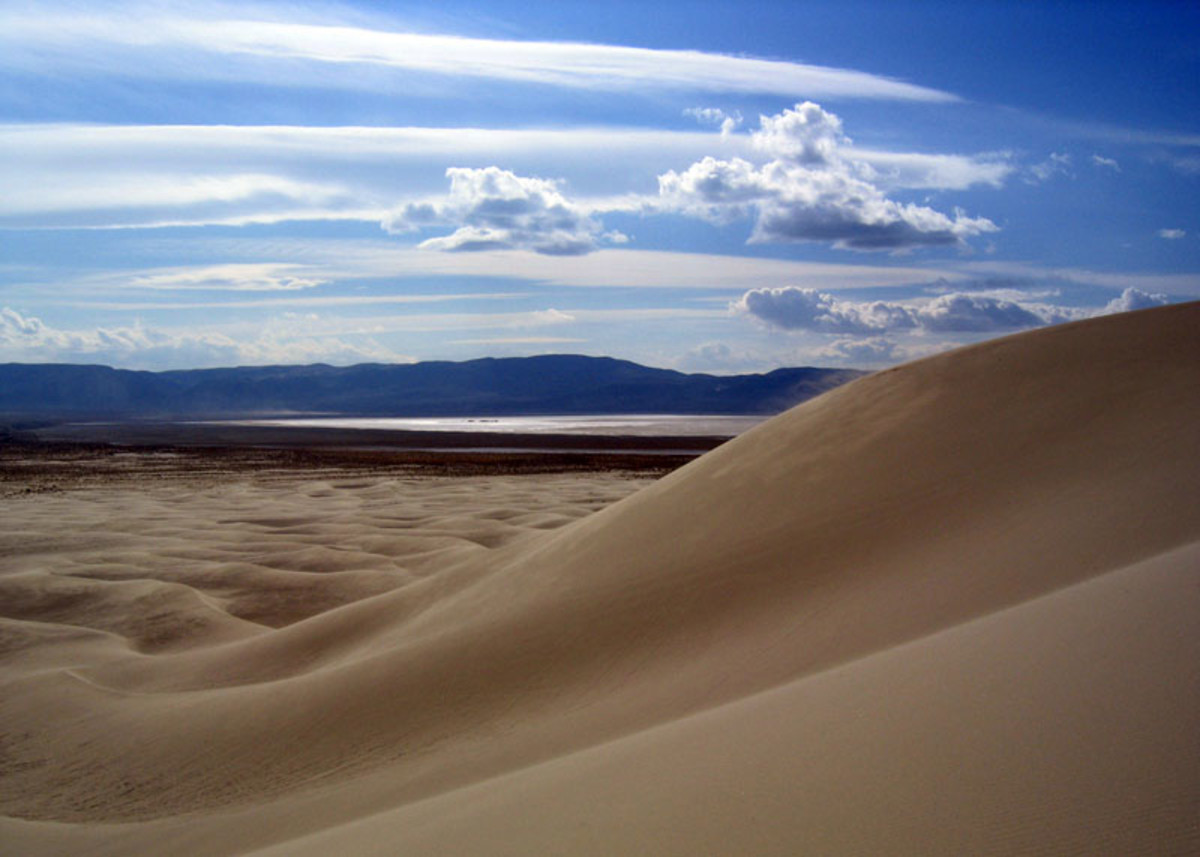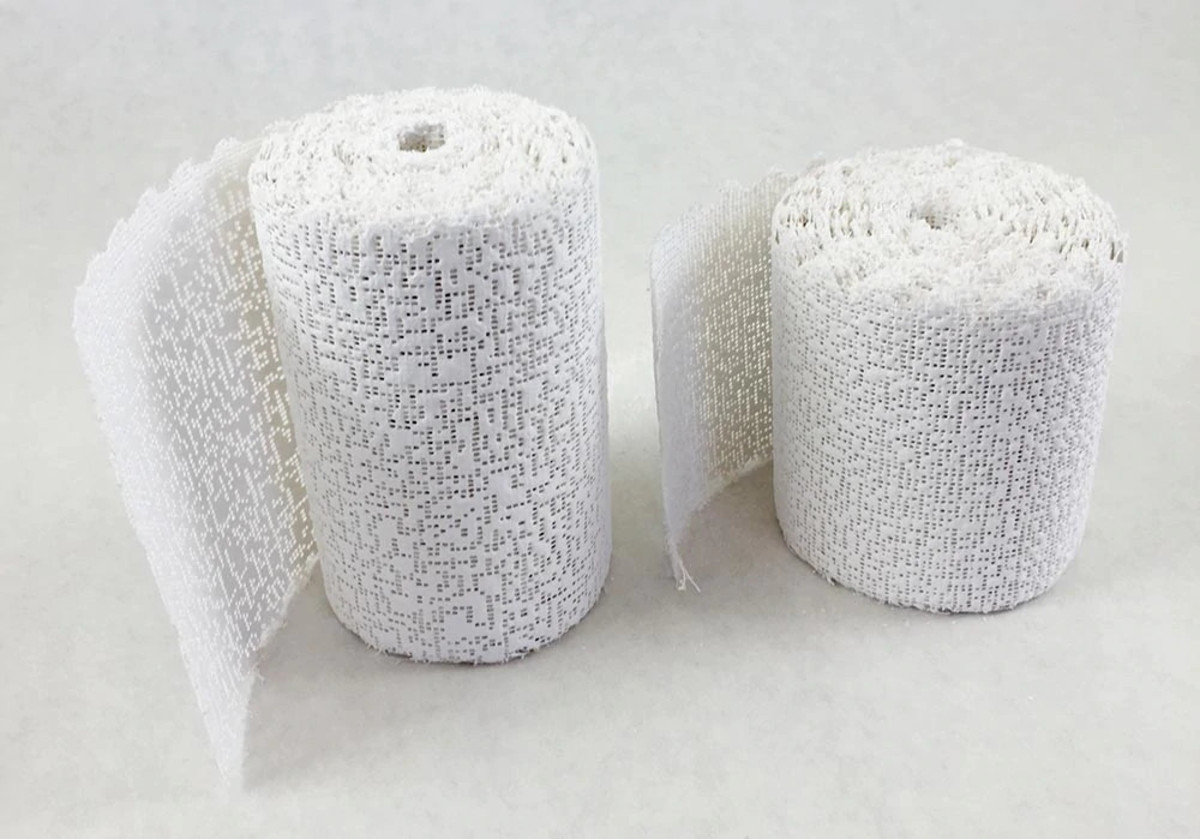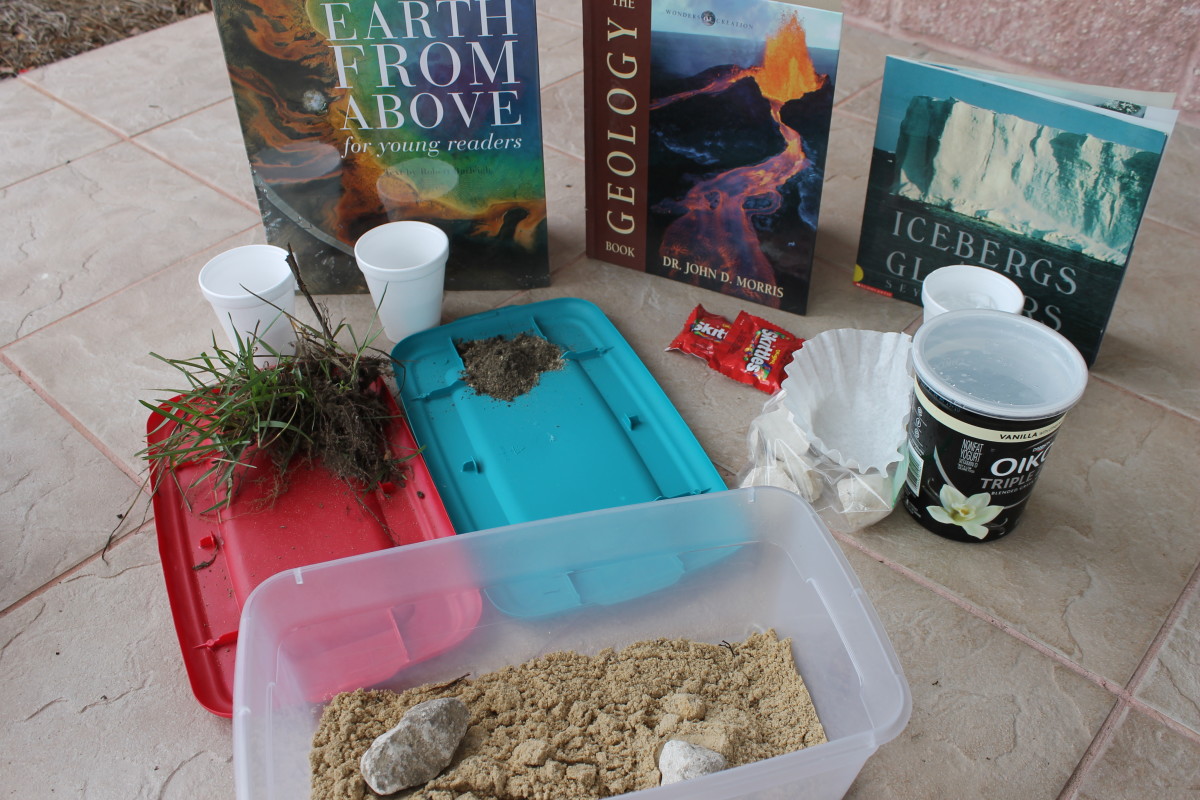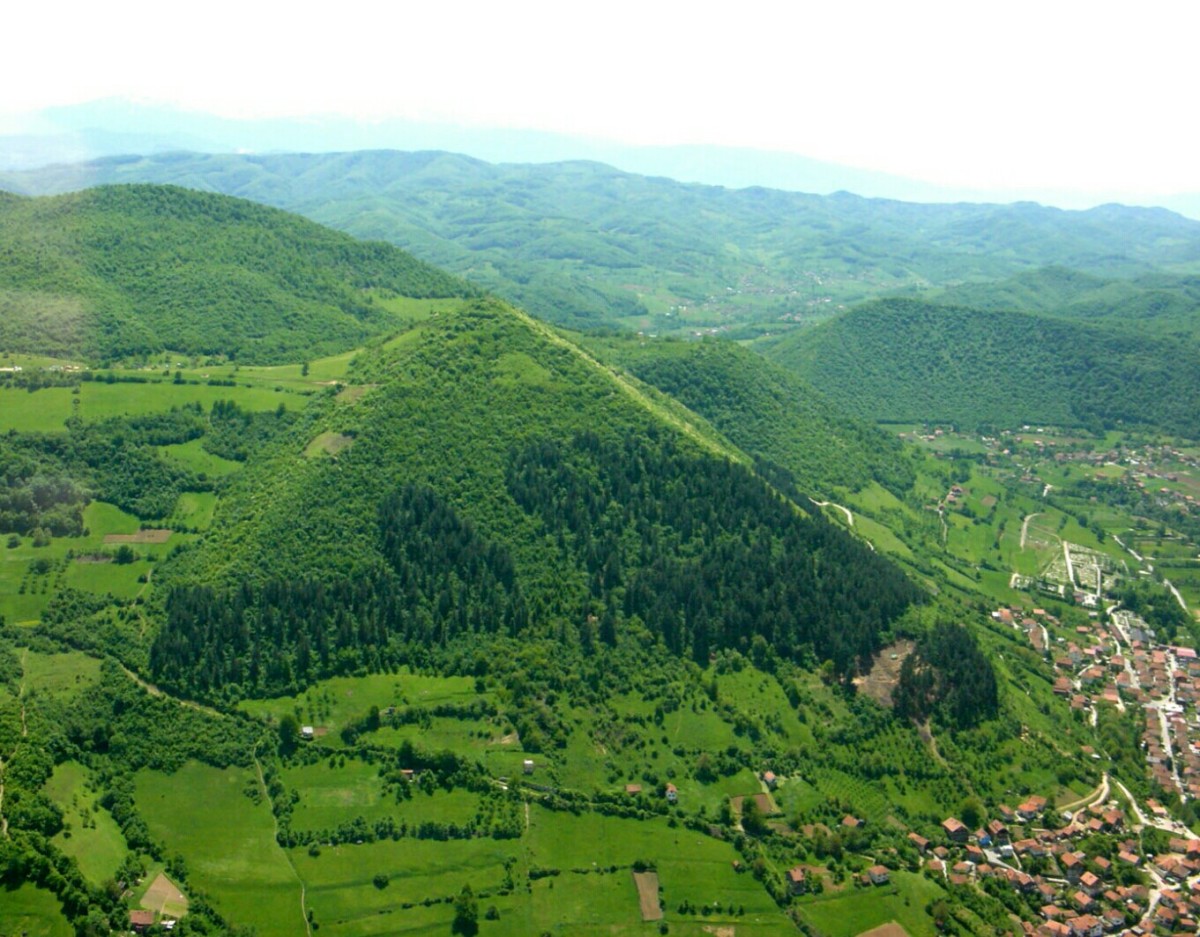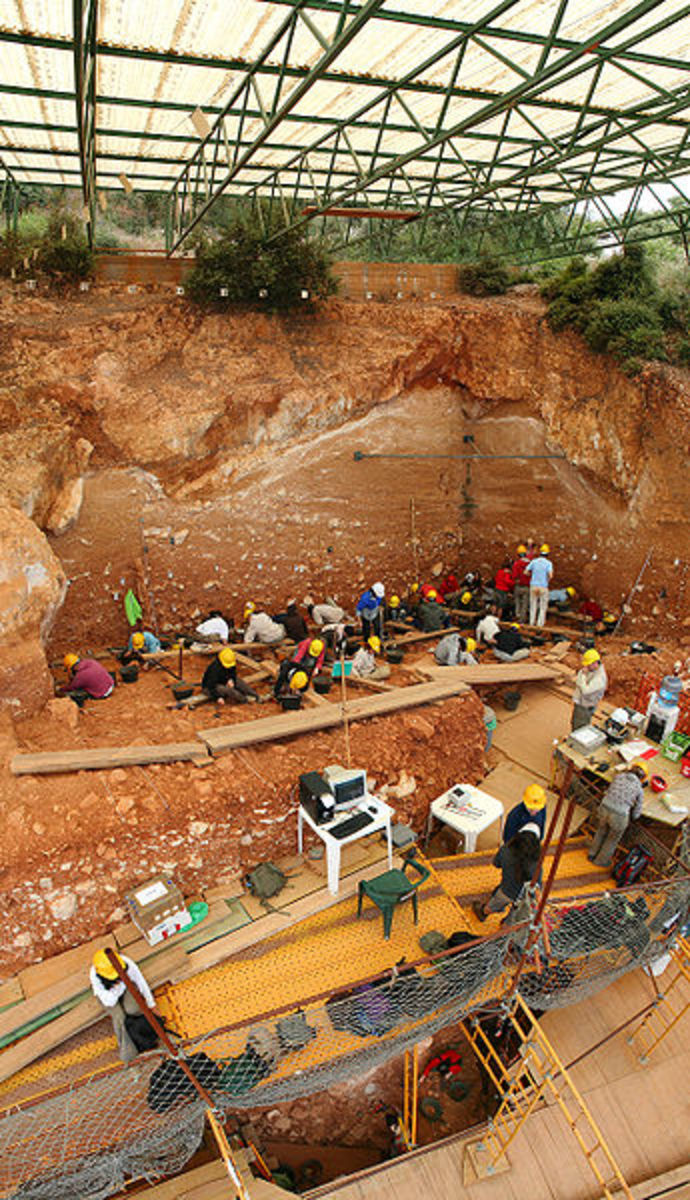Backyard Archaeology: How to Make Your Own Fossil
What would our stuff say about us?
Do you ever wonder what your stuff says about you, or what it would say to future generations? Have you ever wondered what it would be like to make your own fossil slab using items that are associated with the current era? It is a simple, fun project. It's even more fun when shared with a group of young scholars.
Library program inspires young scholars ~
My friend Judy is a children's librarian. She is also an artist. Her ideas and energy around developing projects for children to complete in response to literature are amazing, and very inspiring. My daughter has made a wide range of beautiful pieces with her.
The theme for this summer's reading program at our library is "Dig Into Reading." Judy has found lots of activities to do around digging in the earth. One recent gathering of children involved worm races. Another involved planting and nurturing vegetable plants. The very first one, which she presented at the program kickoff in June, was making your own fossil slab with bones, shells, figurines, sand, and Plaster of Paris.
Fossils made at home are a fun way to learn ~
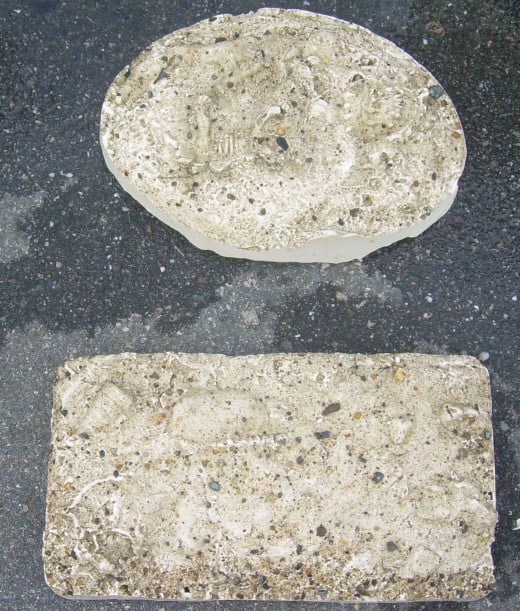
Materials needed for this project
Vessels
| Tools
| Ingredients
|
|---|---|---|
Big bucket for the sand
| Putty knife
| Beach sand
|
Big bucket for mixing Plaster of Paris
| Thick-bristled paint brushes
| Plaster of Paris carton
|
Measuring cup for water
| Garden hose
| Items to impress in sand
|
*Table created by Seafarer Mama for the purpose of this hub
Photo illustrations for making your own fossils ~
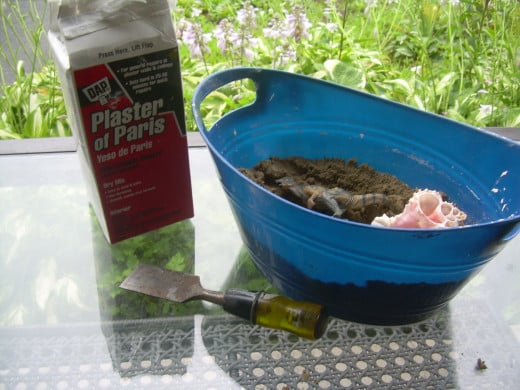
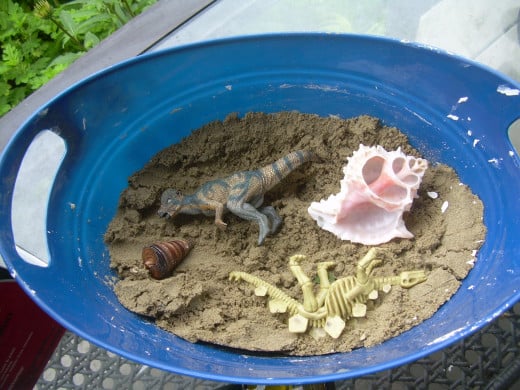
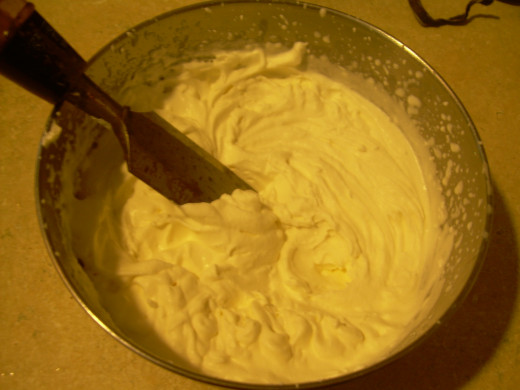
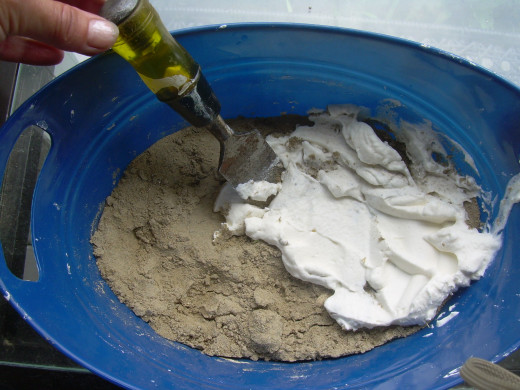
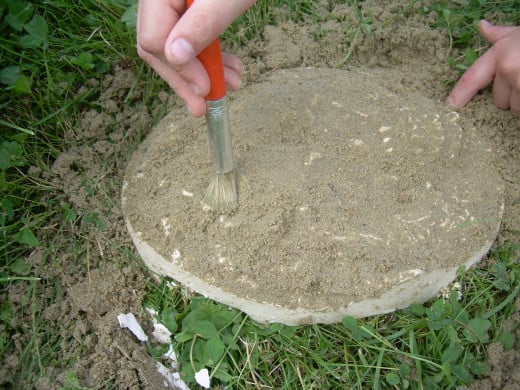
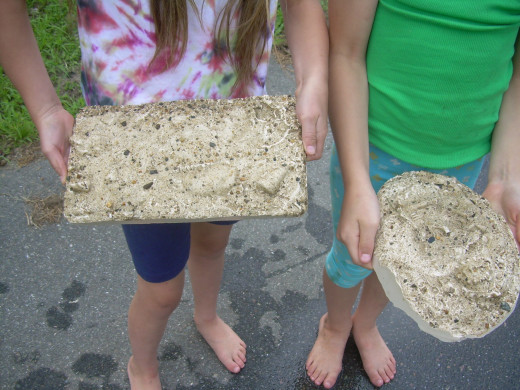
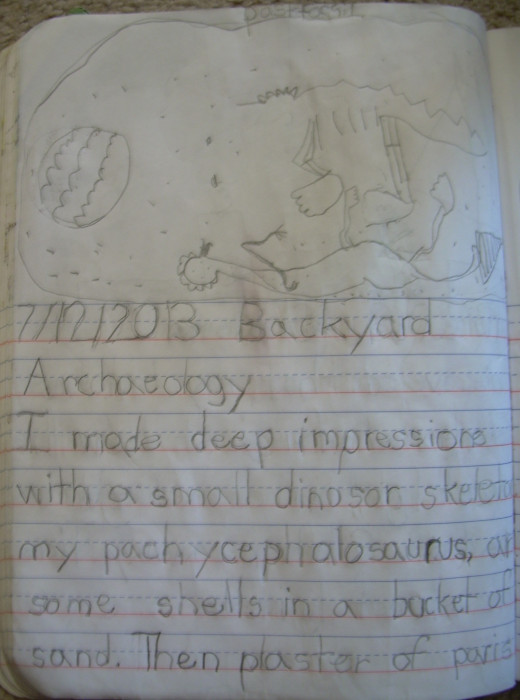
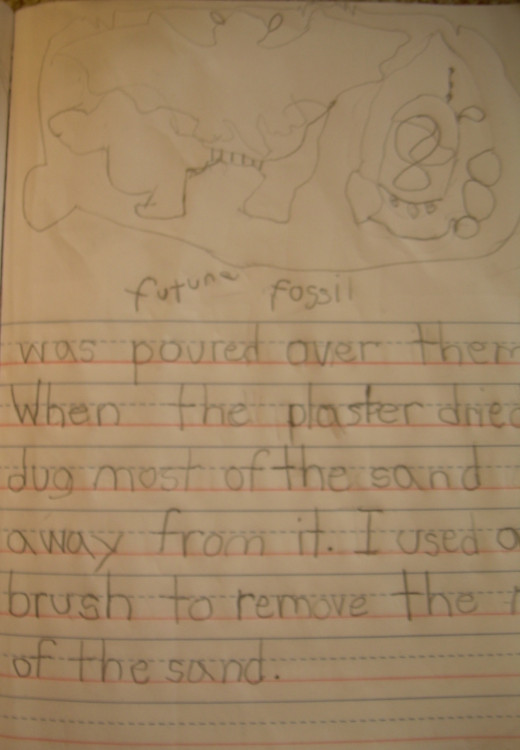
Steps to making your own fossil slab ~
1. Gather items to fossilize
Do you have items around your house that reflect a past age? Are there things from the modern era? Perhaps you will make a slab with some of each.
Past:
dinosaur skeleton
dinosaur figurine
bones
shells
bug toy (such as a dragonfly)
Present:
toy cell phone
toy car
toy bicycle
plastic animal figurine
Doll house clock figurine
Doll house computer figurine
2. Make Indentations in the sand
Step one can be completed at the same time as this step, since the amount of items you can choose is related to their size.
Arrange them across the surface of the sand so that each item has enough space to make a clear impression.
Once the items are arranged on the surface of the sand, push them down as deeply as they will go, then take them out.
3. Mix the Plaster of Paris in a separate bucket
Mix the plaster in a large bowl or bucket, according to the directions provided on the Plaster of Paris carton.
The amount of plaster necessary depends on how many slabs being made at the time.
* The plaster hardens and leftover plaster cannot be reused for a future project, so careful planning is important to make sure the amount made is closely matched with the amount needed.
4. Pour plaster over indented sand
Pour the wet plaster over the surface of the indented sand. Using the putty knife, spread the plaster across the entire surface area so that all of the impressions will be captured and "recorded."
5. Wait 30 to 40 minutes
The amount of time for leaving the plaster to dry, suggested on the carton of plaster powder, was 30 to 40 minutes. You can read about great archaeological finds and enjoy a healthy snack while you wait..
6. Extract fossil slab
When your plaster has dried, carefully turn the container of sand upside down, with your hand underneath to catch the slab. Set it on a stable surface while you extract the fossils from the sand. A patch of grass is perfect for this step.
7. Dig and Brush
Gently dig the top layers of sand away from the slab with your hands. Then brush the rest of the sand away from the fossil forms.
8. Clean
Once you have removed all of the sand that will fall away using your hands and the brush, use a garden hose to wash the rest away. Some of the brown color from the sand will remain on your fossil slab. That will give it a sense of authenticity.
9. Enjoy your fossils!
It's party time! Observe the details in the fossils you have created. Draw all of the items there, and take pictures of everyone holding their treasures. The last 2 pictures reflect the entry my daughter recorded in her science learning journal.
What would you make a fossil with?
Would you make a fossil of your own using historical or modern items
© 2013 Karen A Szklany

